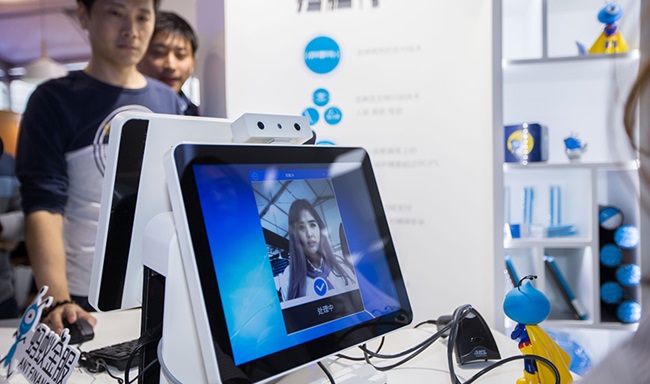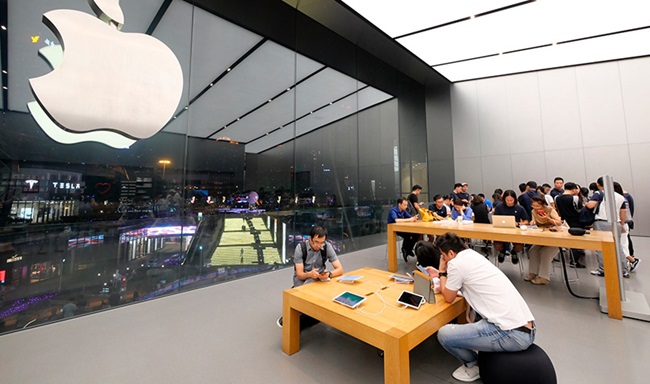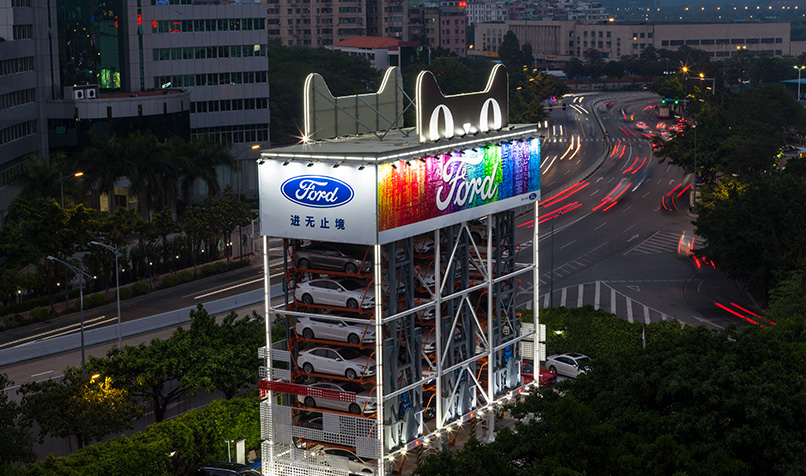Countries are testing a range of concepts, from facial-recognition payment systems to fully automated convenience stores. Here’s why China is now the world’s retail laboratory.
By Rachel Chang
The internet boom reached China late, but the country’s consumers have adapted to life online more rapidly and thoroughly than those anywhere else. E-commerce sales soared past US$1 trillion in 2017, the highest anywhere in the world. Here, groceries can be delivered to your home within the hour, and street vendors prefer mobile payment over cash.
China has fewer malls and stores than the US, but even these have seen sales slump as consumers prefer to venture outside for experiences, not shopping. In a sign of e-commerce’s dominance over bricks-and-mortar retail, internet giant Alibaba Group Holding Ltd., which runs the biggest e-commerce platform in the world, paid about US$6 billion to take control of China’s top supermarket chain and one of its biggest department store franchises in 2017.
Its goal, according to Vey-Sern Ling, senior internet analyst at Bloomberg Intelligence, is to have “control over more and more data on customers”, whether they’re shopping in stores or online.
“Going into offline areas allows them to expand their addressable market beyond 800 million internet users to possibly every person in China,” Ling says.
Spurred by consumers who crave novelty and adapt quickly to new technology, Alibaba, Tencent Holdings Ltd., and a host of other well-funded start-ups are rolling out technologies that may still be in beta model – or that could face pushback in markets where privacy is more jealously guarded. Here are seven noteworthy concepts and formats.
1. Smile to pay

One restaurant in Hangzhou has been trialling a system called Smile to Pay that’s powered by Ant Financial Services Group, Alibaba’s mobile payment unit. Yum China Holdings Inc., which operates 8000 KFC and Pizza Hut restaurants in China, has launched a franchise called KPRO aimed at younger, higher-income consumers. KPRO serves healthier fare, including fresh salads and panini. Diners place their order at a digital kiosk that scans their face with a 3D camera, collecting biometric data it matches with information on Ant’s servers. Users key in their mobile number for added security. The company credits the lightning-fast system with thinning lines during peak hours.
China is ahead of any other country in the deployment of facial recognition and other biometric systems.
“The issue now is getting the technology to a level where there is no error rate,” says Ling, the internet analyst. “Outside of China, there is likely to be more resistance given data privacy concerns.”
2. The return of the automat
At Wufangzhai, a restaurant chain in Zhejiang province famed for its sticky-rice dumplings, the calls of fuwuyuan (“waiter” in Mandarin) that typically ricochet across Chinese restaurants are conspicuously absent – as are the waiters themselves.
Since 2017, Wufangzhai has equipped all eight of its outlets in Hangzhou with Alibaba-powered technology that allows a diner to order food on their mobile phone or a screen at the entrance of the restaurant, then pick up their meal from lockers connected to the kitchen.
When the food is ready, the customer receives a notification on their phone with a locker number. The cubby clicks open as the customer approaches.
“If a customer picks up a bottle of moisturiser from one of the smart shelves, product information automatically appears on an adjacent screen.”
Drinks are dispensed from smart vending machines that look like refrigerators that are unlocked by scanning a QR code on the door with a phone. After the customer closes the door again, the app automatically charges for the bottles the customer takes by reading radio frequency identification (RFID) tags attached to the drinks. The system isn’t foolproof: on one visit, some tags had slipped off the bottles.
Wufangzhai says revenue in the first half of 2018 increased 30 per cent from a year earlier, while staff costs are down.
3. Boxed in
A Guangzhou-based start-up called BingoBox has built a network of 300 fully automated convenience stores. The free-standing glass boxes, about half the size of a 7-Eleven, stock a similar assortment of merchandise, all of it labelled with RFID tags. Shoppers gain access by scanning a QR code displayed on the front of the store with the WeChat app.
Selected items are placed on a counter, and an RFID reader instantly – and quite accurately, at least in tests – tallies the total. Shoppers pay only via a mobile phone. A scanner near the door verifies that a customer is leaving with only the goods they paid for. Since its founding in 2016, BingoBox has raised about US$100 million from investors led by GGV Capital and Fosun Capital.
4. Try before you buy

Alibaba has equipped a store in Hangzhou that sells the Korean brand Innisfree’s beauty products with “magic” mirrors that use augmented-reality technology so a shopper can virtually try on different shades of lipstick or eye shadow. The customer waves an attached wand over their face; the mirror displays recommended products based on readings of skin moisture, pigmentation, and wrinkling.
If a customer picks up a bottle of moisturiser from one of the smart shelves, product information automatically appears on an adjacent screen.
5. Let a million influencers bloom
China’s influencers are light-years ahead of Kylie Jenner and her ilk. Thousands of them have capitalised on their online popularity to establish clothing and beauty lines, and some even sell bigger-ticket items such as wine and cars directly to fans. They do this through a multitude of livestreaming apps that reach an audience of 398 million, according to research firm iiMedia.
Among those with the largest followings are Little Red Book, an e-commerce/social media site that claims 100 million users, and Meipai, a video-sharing platform that’s an offshoot of selfie app Meitu, which has 152 million users. Spurred by the success of these players, Alibaba’s giant Taobao marketplace added livestreaming for merchants in early 2016.
“One of the most popular influencers, Zhang Dayi, sold 20 million yuan (US$2.9 million) in apparel in a two-hour livestream in 2016.”
One of the most popular influencers, model Zhang Dayi, sold 20 million yuan (US$2.9 million) in apparel in a two-hour livestream in 2016. Unlike many Australia and American influencers, who get paid for endorsing existing brands, Zhang and many of her peers own businesses that design and sell products created around their personalities and lifestyles.
According to industry researcher CBNData, China’s influencer economy totalled about US$17 billion last year.
6. A car vending machine

Car shopping in Guangzhou, China’s third-largest city, became a bit less painful in March 2018. Instead of having to go from dealership to dealership to kick the tyres on models, a prospective buyer can schedule a test drive at their convenience by going online. They can then pick up the vehicle at a Ferris-wheel-like vending machine built by Alibaba. The structure holds 30 automobiles in a stack – including models by BMW, Ford, and Volvo.
The fee for a three-day test drive is only a couple of hundred yuan (less than US$50), but the security deposit can go up to the thousands. Alibaba says “dozens” more of the machines are planned in cities across China.
7. Factory brands
A decade-long government crackdown has closed the bazaars in Beijing and Shanghai that used to peddle counterfeit bags, watches, and shoes. However, demand for copycats persists, as evidenced by the popularity of a shopping app called Yanxuan, which means “strict selection” in Mandarin.
The app connects to a marketplace that displays a broad range of items from bedsheets to backpacks that are supposedly sourced directly from the same local factories that produce goods for Muji, Nine West, and other international brands. A pair of sandals manufactured by “a supplier to Birkenstock” is priced at about 60 yuan (US$8.70), while the same style sells for about US$100 on the German brand’s website.
China’s small businesses lead the way
If Mainland China is the world’s retail laboratory, its small business owners are the pioneering scientists of digital sales and e-payment.
CPA Australia’s annual small business survey – entering its ninth year – consistently finds that small businesses in the Asia-Pacific region are successfully leaping into the digital era.
Business owners and managers in Mainland China, in particular, have embraced digital payment, with two-thirds reporting they offer at least one e-payment option from digital platforms such as AliPay, ApplePay and WeChat Pay.
A third of them say that payments via digital platforms make up over 30 per cent of their total sales and that investment in such technology soon pays off.
The survey also finds a clear link between business profitability and innovation. Those businesses that launch a new product or service, invest in new processes or tweaking an existing product are most likely to report growth – and to expect further growth.
This story was originally published on www.bloomberg.com.
Read next: Alibaba and JD.com battle it out for China’s e-commerce business

